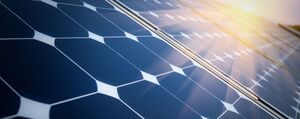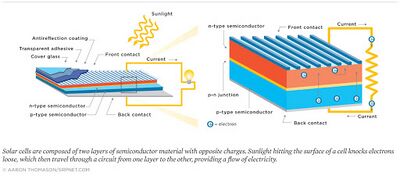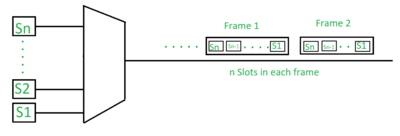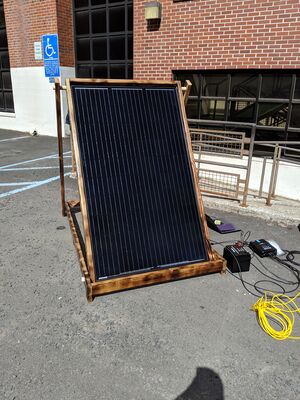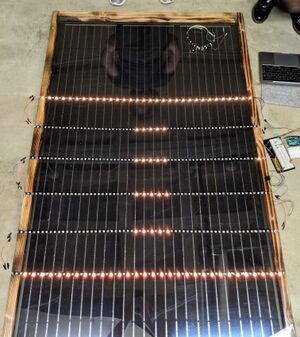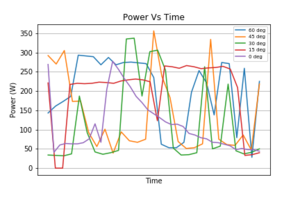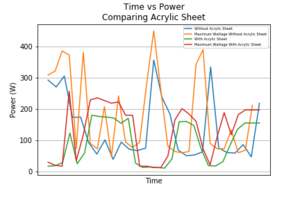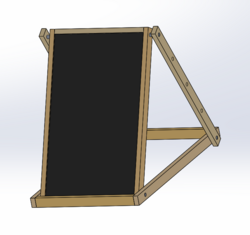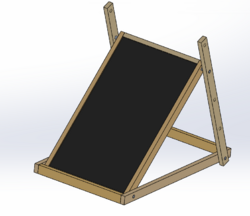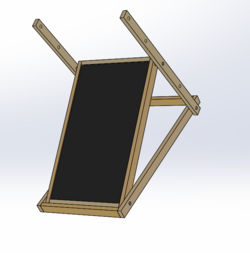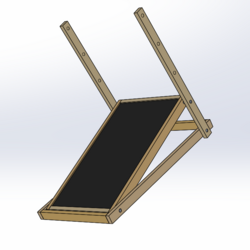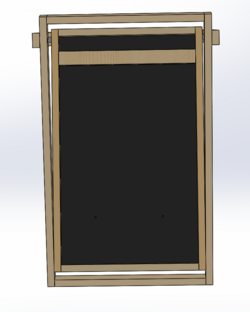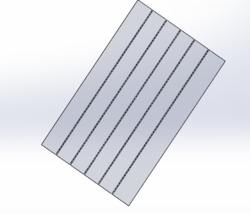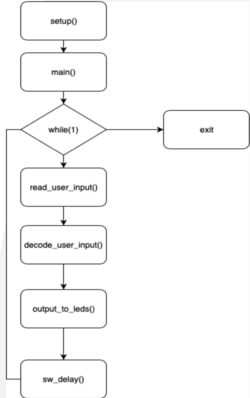Solar Roadways Feasibility Study
| Q-Cell Solar Panel | |
| Sponsors | Dr. Herbert Hess |
| Team Name | Solar Rollers |
| Duration | Fall 2018 - Spring 2019 |
| Faculty Adviser | Dr. Feng Li
|
| Mentor | Hussain Beleed |
| Client | Dr. Herbert Hess |
| Team Members |
|
Problem Definition[edit | edit source]
Demonstrate the feasibility of various solar panel options available for installation on campus.
Background[edit | edit source]
The University of Idaho is currently preparing to expand on campus next to the Kibbie Dome. The building that will be erected is the Idaho Central Credit Union Arena, which will occupy the current gravel lot adjacent to the enclosed football field on the northern side. While the project will begin groundbreaking following its secured funding for construction, time remains where additions may be suggested to those directing the project. The senior design team would like to investigate the solar panel options available for installation on campus. The team reviewed unique solar panel features to combine into a more versatile prototype. The final product will generate power at increased efficiencies compared to its counterparts and house an original LED display capable of representing a range of possible demonstrations.
Deliverables[edit | edit source]
- Understanding and implementing detailed controls which allow for the manipulation of the LED displays for each panel
- Design of a custom angle adjusting frame to house the Q-Cell 305W Mono Module solar panel
- Validating the efficiency of the PV panels to that of other PV panels located on campus
Specifications[edit | edit source]
| Design Area | Specification |
|---|---|
| Electical |
|
| Hardware |
|
| Software |
|
| Mechanical |
|
| Feasibility Analysis and Validation |
|
Design Considerations[edit | edit source]
| Design Area | Test |
|---|---|
| ATtiny85 Application |
|
| LED Display with Custom Software |
|
| Angle Efficiency |
|
| Panel Interference |
|
| Feasibility Analysis |
|
Project Learning[edit | edit source]
Overall Project Learning Goals
- Gain a better understanding of solar panel integration on an already existing grid
- Gain a better understanding of semiconductor physics within a solar panel
- Gain a better understanding of how the angle of a install solar panel effects efficiency
- Gain a better understanding of implementing time division multiplexing to transmit multiple digital signals over a common channel split into segments with a short time duration
Photovoltaic Cells
Semiconductor with a pn junction is exposed to light. The photons of the light can energize the electrons in the valence band. If the electron gains enough energy to cross the band gap, then it creates an electron hole pair, with the electron going to the conduction band. There is an electric field being created from the electrons and holes combining, which the free electrons increase the electric field, increasing the voltage and creates a current to produce power. The Antireflection coating is so photons aren’t reflected off the semiconductor’s surface. The front contacts are to allow current to flow, because shocker semiconductors aren’t the best conductors. The glass is there to protect the cell.
Time Division Multiplexing
Time division multiplexing is a communications process that transmits two or more streaming digital signals over a common channel. In Time division multiplexing, incoming signals are divided into equal fixed-length time slots. After multiplexing, these signals are transmitted over a shared medium and reassembled into their original format after de-multiplexing. Time slot selection is directly proportional to overall system efficiency.
Temperature and Efficiency
As temperature increases, the power decreases. An increase in temperature decreases the band gap of the semiconductor, or another way to think of it is the electrons gain more energy. For solar cells, the open circuit voltage is affected most by the temperature increase. There’s a lot of device physics and equations behind the concepts.
Final Design[edit | edit source]
Adjustable Frame Design[edit | edit source]
The final design of the solar panel with the adjustable frame to house the LED display. The team designed two rectangular frames, one for the base support and the other for supporting the frame when adjusted at different angles. These frames worked in tandem with the supporting sidebar which had holes for the dowels used to lock the frame into a desired configuration. The LED display was created with an acrylic sheet that was reduced to the necessary size in order to fit on top of the inner frame while still allowing for angle adjustments to be made. The LEDs were then mounted onto the acrylic sheet through adhesive, with connections between each strip of LEDs being soldered in a series resulting in a final result that allowed for manipulation through one overall access point.
Led Display Design[edit | edit source]
For the control of the LEDs, two different methods were used along with a different microcontroller for each. The first method consisted of an Arduino uno programmed in C with the Arduino IDE. This was used to create the I logo shown above. The second method used the Blinkstick (ATtiny85) programmed in python with the dash framework to create a GUI. The design of the GUI was still a work in progress and requires further development for full operation.
Power Generation Graphs[edit | edit source]
Initial data captures demonstrating the panels potency at different angles and weather conditions. Follow-up data captures showing trends from a pyranometer’s theoretical generation versus actual generation that occur before and after the display was added. The power generation created by the system is able to support the LED display even when an acrylic sheet was placed over the panel. The system is capable of being placed as a permanent unit within the UofI electrical grid.
Return on Investment[edit | edit source]
| Solar Panel | Results |
|---|---|
| Backwoods Solar |
|
| SolarOne |
|
| Solar Roadways |
|
From each respective panel option, the Annual Generation and ROI were found. While through the differences in cost to that of generation alone, the ROI values reflect the various periods required to completely pay off each possible installation. Of the three, the hybrid model is shown to be the most cost effective.
Validation[edit | edit source]
Mechanical Validation[edit | edit source]
Software Validation[edit | edit source]
Team Members[edit | edit source]
|
Major: Computer Engineering | |
|
Major: Electrical Engineering
| |
|
Major: Electrical Engineering
|
Additional Documentation[edit | edit source]
Project Schedule
Meeting Minutes
9/11 Meeting Minutes
9/18 Meeting Minutes
9/25 Meeting Minutes
10/2 Meeting Minutes
10/9 Meeting Minutes
10/16 Meeting Minutes
10/23 Meeting Minutes
10/30 Meeting Minutes
11/13 Meeting Minutes
11/27 Meeting Minutes
12/4 Meeting Minutes
1/16 Meeting Minutes
1/23 Meeting Minutes
1/30 Meeting Minutes
2/6 Meeting Minutes
2/13 Meeting Minutes
2/20 Meeting Minutes
2/27 Meeting Minutes
3/6 Meeting Minutes
3/20 Meeting Minutes
3/27 Meeting Minutes
4/3 Meeting Minutes
4/17 Meeting Minutes
Presentations
Concept Design Review
Critical Design Review
Engineering Expo
Client Interview
